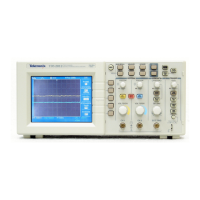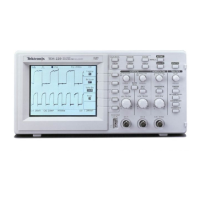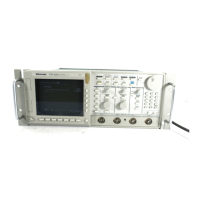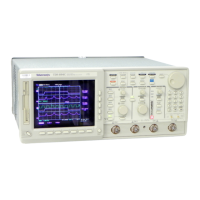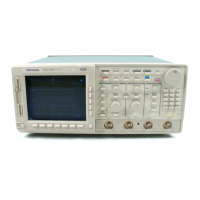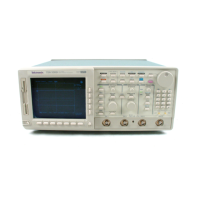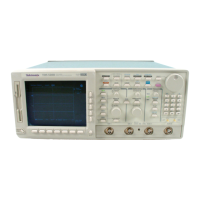Basic Concepts
14
TDS 200-Series Digital Oscilloscope User Manual
Coupling
Trigger coupling determines what part of the signal passes on to the
trigger circuit. Coupling types include DC, AC, Noise Rejection,
High Frequency Rejection, and Low Frequency Rejection.
DC. DC coupling passes both AC and DC components.
AC. AC coupling blocks DC components.
Noise Rejection. Noise Reject coupling lowers the trigger sensitivity
and requires more signal amplitude for stable triggering. This
reduces the chance of falsely triggering on noise.
High Frequency Rejection. HF Reject coupling blocks the high
frequency portion and passes on only the low frequency components.
Low Frequency Rejection. LF Reject coupling does the opposite of high
frequency rejection.
Position
The horizontal position control establishes the time between the
trigger and the screen center. Refer to Horizontal Scale and Position;
Pretrigger Information on page 17 for more information on how to
use this control to position the trigger.
Slope and Level
The Slope and Level controls help to define the trigger.
The Slope control determines whether the oscilloscope finds the
trigger point on the rising or the falling edge of a signal. To access
the trigger slope control, press the TRIGGER Menu button, select
Edge, and use the Slope button to select Rising or Falling.
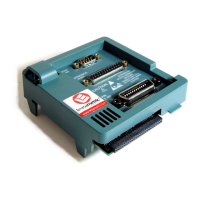
